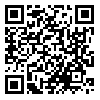Volume 29, Issue 4 (Winter 2022)
J Birjand Univ Med Sci. 2022, 29(4): 330-342 |
Back to browse issues page
Research code: 1172913799545251399162403232
Ethics code: R.IAU.RASHT.REC.1400.027
Clinical trials code: IRCT20180503039517N11
Download citation:
BibTeX | RIS | EndNote | Medlars | ProCite | Reference Manager | RefWorks
Send citation to:



BibTeX | RIS | EndNote | Medlars | ProCite | Reference Manager | RefWorks
Send citation to:
Ansari S, AdibSaber F, Elmieh A, Rezaei M. The effect of eight weeks of high-intensity interval training and sleep regulation on resistance and sensitivity of insulin, body fat percentage, and reaction time in adolescent girls with sleep disorders. Journals of Birjand University of Medical Sciences 2022; 29 (4) :330-342
URL: http://journal.bums.ac.ir/article-1-3188-en.html
URL: http://journal.bums.ac.ir/article-1-3188-en.html
1- Department of Physical Education, Faculty of Humanities, Rasht Branch, Islamic Azad University, Rasht, Iran
2- Department of Physical Education, Faculty of Humanities, Rasht Branch, Islamic Azad University, Rasht, Iran ,elmieh1592@yahoo.com
2- Department of Physical Education, Faculty of Humanities, Rasht Branch, Islamic Azad University, Rasht, Iran ,
Abstract: (2758 Views)
Background and Aims: Sleep disorders increase many diseases and a decrease physiological function. This study aimed to compare the effect of the two methods of high-intensity interval training (HIIT) and sleep regulation program and a combination of the two on insulin resistance and sensitivity, body fat percentage, and reaction time in adolescents with sleep disorders.
Materials and Methods: This is a single-blind and quasi-experimental study was conducted based on an applied research method. In total, 80 female students with sleep disorders (13-17 years old) were selected by the available sampling method and randomly divided in four groups (n=20). All subjects participated in the pre-test and post-test sessions for measurements two days before and after the research process, respectively. The participants in the HIIT and combined groups followed the RAST (Running-Based Anaerobic Sprint Test) program for 4 weeks, three sessions a week, and the sleep regulation and combined groups followed the sleep schedule for 4 weeks, according to the necessary recommendations. Data were analyzed using SPSS software (version 26) and running paired t-test, and ANCOVA. Moreover, a P-value of ≤0.05 was considered significant.
Results: The findings showed that 4 weeks of combined intervention of HIIT+sleep regulation could lead to a significant improvement in all research variables, including glucose, insulin, insulin resistance and sensitivity, pancreatic beta cell function, body fat percentage, and reaction time of girls (P=0.001). In addition, the HIIT group, compared to the sleep regulation and control groups, caused a significant improvement in glucose, insulin resistance and sensitivity, pancreatic beta cell function, body fat percentage, sleep quality, and reaction time (P=0.001), except for insulin (P=0.428).
Conclusion: According to the obtained results, HIIT combined with sleep regulation can be a valuable intervention in treatment programs to improve physiologic problems reduce the costs of treatment for adolescent girls with sleep disorders and their families.
Materials and Methods: This is a single-blind and quasi-experimental study was conducted based on an applied research method. In total, 80 female students with sleep disorders (13-17 years old) were selected by the available sampling method and randomly divided in four groups (n=20). All subjects participated in the pre-test and post-test sessions for measurements two days before and after the research process, respectively. The participants in the HIIT and combined groups followed the RAST (Running-Based Anaerobic Sprint Test) program for 4 weeks, three sessions a week, and the sleep regulation and combined groups followed the sleep schedule for 4 weeks, according to the necessary recommendations. Data were analyzed using SPSS software (version 26) and running paired t-test, and ANCOVA. Moreover, a P-value of ≤0.05 was considered significant.
Results: The findings showed that 4 weeks of combined intervention of HIIT+sleep regulation could lead to a significant improvement in all research variables, including glucose, insulin, insulin resistance and sensitivity, pancreatic beta cell function, body fat percentage, and reaction time of girls (P=0.001). In addition, the HIIT group, compared to the sleep regulation and control groups, caused a significant improvement in glucose, insulin resistance and sensitivity, pancreatic beta cell function, body fat percentage, sleep quality, and reaction time (P=0.001), except for insulin (P=0.428).
Conclusion: According to the obtained results, HIIT combined with sleep regulation can be a valuable intervention in treatment programs to improve physiologic problems reduce the costs of treatment for adolescent girls with sleep disorders and their families.
Keywords: Body fat percentage, High-intensity interval training, Insulin resistance, Insulin sensitivity, Sleep disorders
Type of Study: Original Article |
Subject:
Exercise Physiology
Received: 2022/07/10 | Accepted: 2023/02/21 | ePublished ahead of print: 2023/03/14 | ePublished: 2023/03/6
Received: 2022/07/10 | Accepted: 2023/02/21 | ePublished ahead of print: 2023/03/14 | ePublished: 2023/03/6
Send email to the article author
| Rights and permissions | |
 |
This work is licensed under a Creative Commons Attribution-NonCommercial 4.0 International License. |







